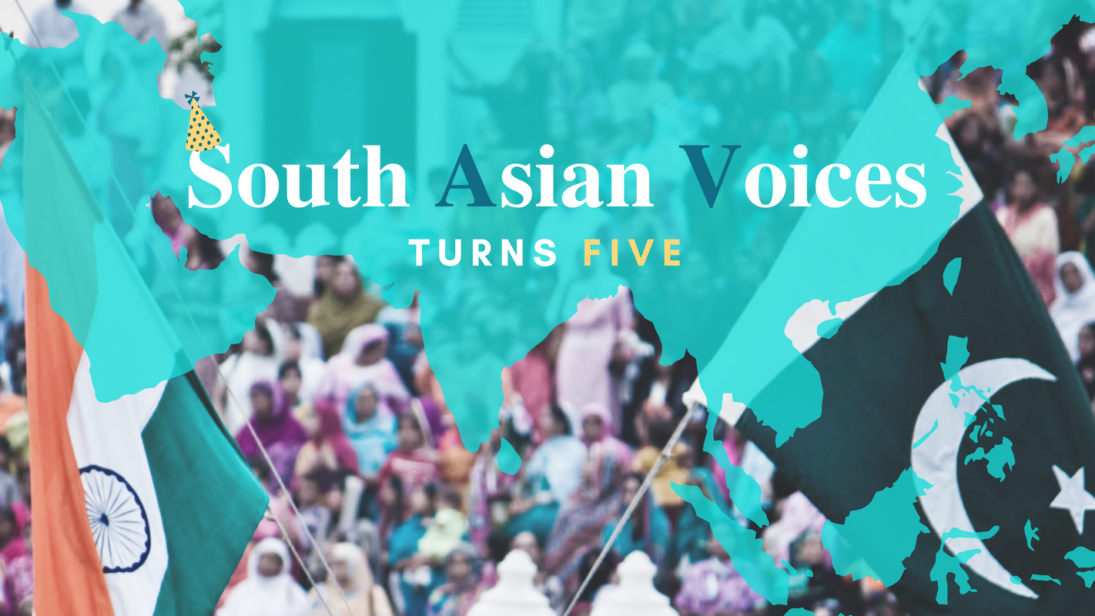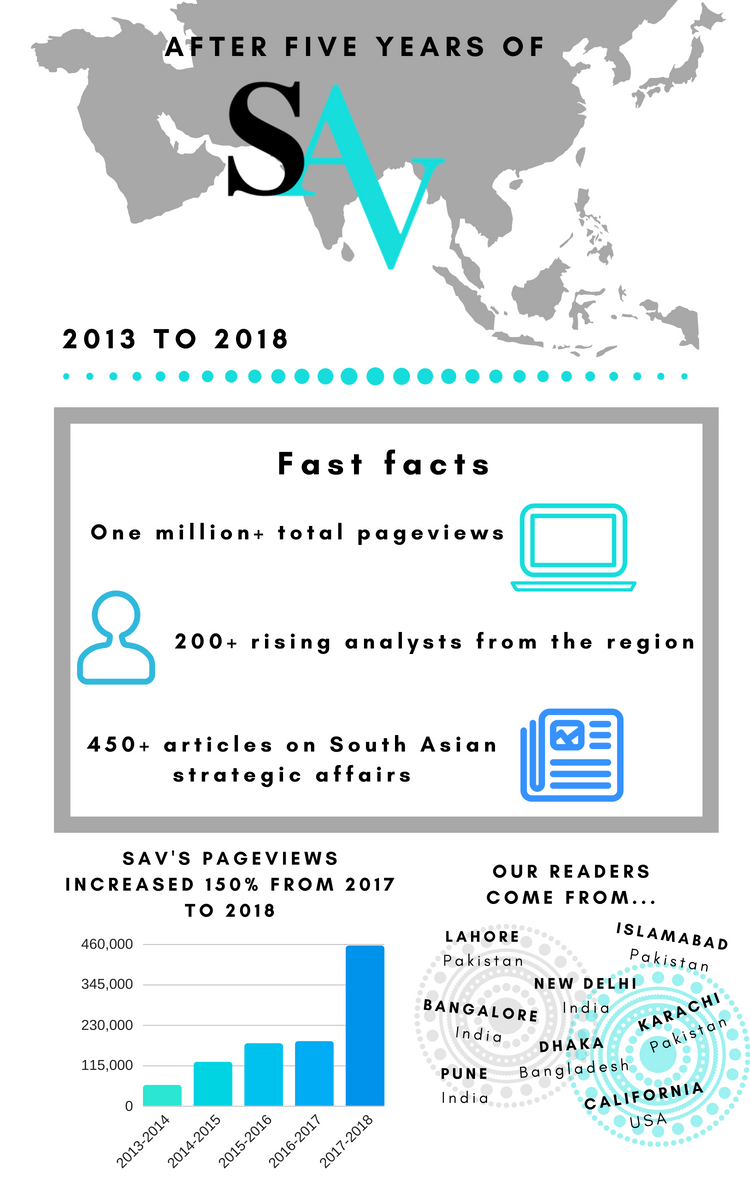
In September 2013, the Stimson Center launched South Asian Voices (SAV). Five years later, SAV has transformed from a blog for informal, free-flowing debate between young analysts in India and Pakistan to an online policy platform for informed analysis on South Asia’s economic, political, and strategic affairs. In this time, SAV has been:
1. Encouraging Innovative Analysis on South Asia
Read the most popular articles from SAV ‘s inception to the present.
2.Engaging Rising Analysts
This interactive map shows the affiliations of SAV contributors globally.
3. Deepening Debate Across Borders
Look back on SAV ‘s featured series, which have been a cornerstone in the platform’s mission to facilitate crossborder debate on the most polarizing issues in the subcontinent.
4. Creating a Community of Fellows
The six-month South Asian Voices Visiting Fellowship has seen 31 SAV contributors and analysts from India and Pakistan, all of whom have spent four weeks in residence at the Stimson Center in Washington, D.C.
5. Enhancing Understanding of the Region
SAV ‘s informed analysis on the region’s intricate security, political, and economic dynamics reaches more readers now than ever before.
